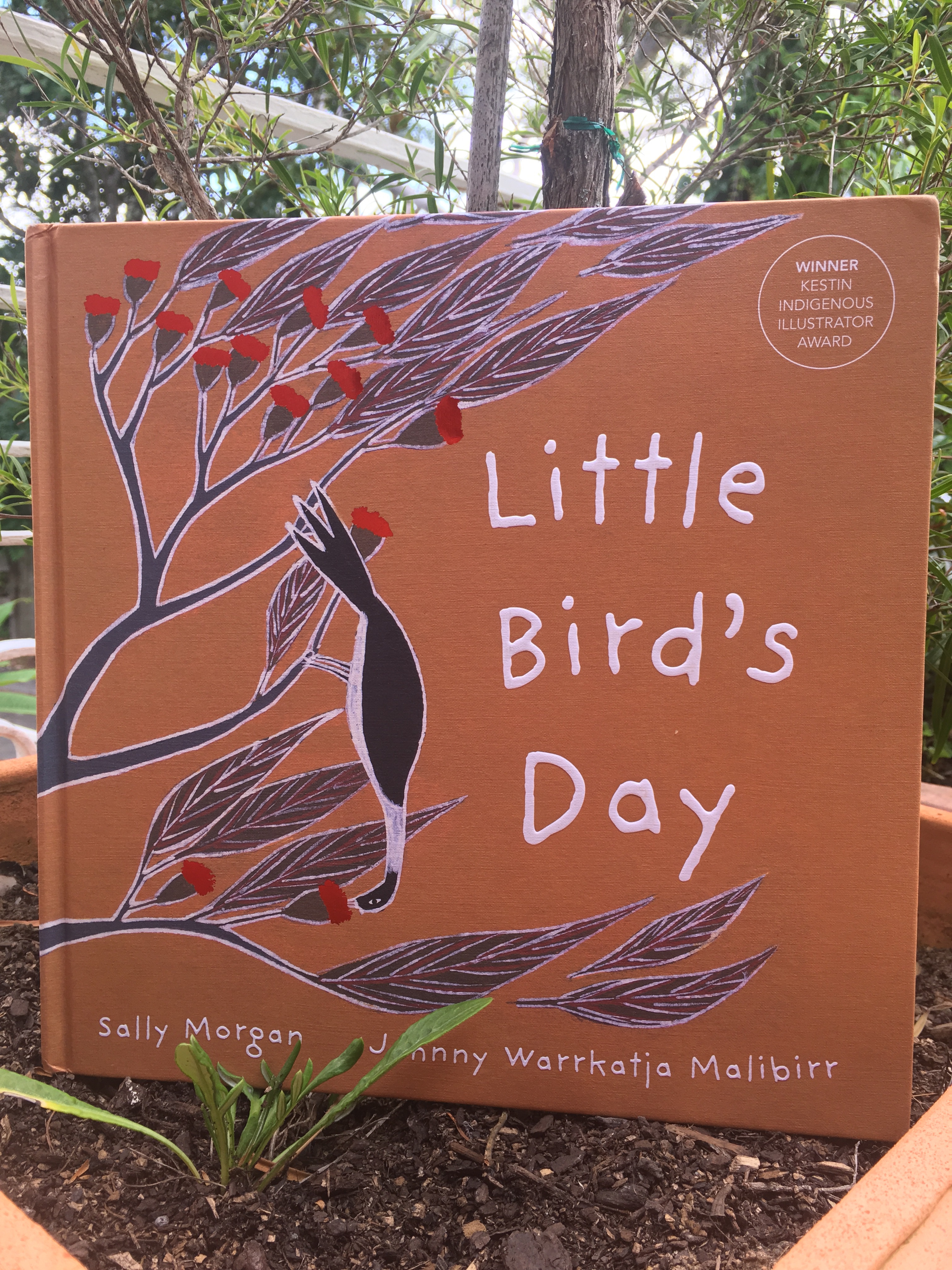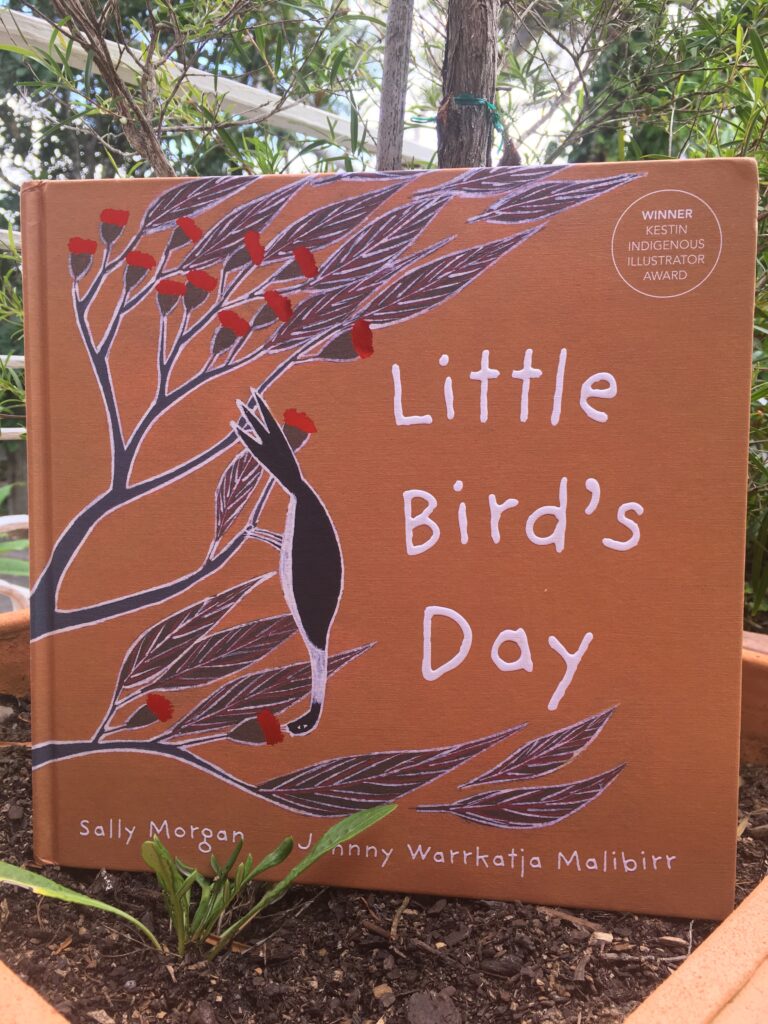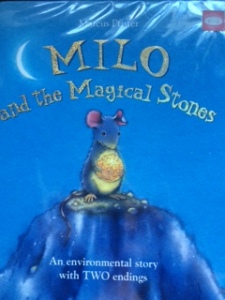Little birds flit around us all of the time, but what do they eat? Where do they go when the sun goes down and why do they wake us up so early?

In Little Bird’s Day by Sally Morgan and illustrated by Johnny Warrkatja Malibarr the daily life of a bird is explained through simple language and traditional art techniques.
Through the story we hear the personification of the clouds and the moon, we wonder about the dreams the little bird has and we listen to the daily movements it needs to make to survive.
On each page the reader is told what is happening to the little bird and then in italics there is a whisper from the world telling the little bird what to do
Here come Cloud, huffing and puffing.
Time to play little Bird, time to spin across the sky.
Johnny Warrkatja Malibarr is the inaugural winner of the Kestin Indigenous Illustrator award and through his illustrations this story is brought to life. The cross hatching of the animal skin show texture, the colours of the desert show the variety of landscape in the desert regions and the night sky pages is full of dreams and wonder.
This story will appeal to readers of all ages as not only will readers learn about the daily life of a bird but Indigenous art techniques and the use of figurative language.
So what can you do?
Sustainability
What do birds need from the natural world to survive? What happens to them if some of the things the little bird does in this book go missing?
Literacy
Look at the personification of dusk and the moon. Why have they used this literary technique? Explore different ways to personify objects.
Science
Explore the daily life of a bird and create a flowchart to show this.
STEAM
Create a book based on the daily life of a bird local to your area using indigenous techniques from a local artist if possible.
Write a story about the daily life of a native animal local to your area – perhaps as it lives naturally and then as it lives in the urban environment. How would different objects interact with it?


